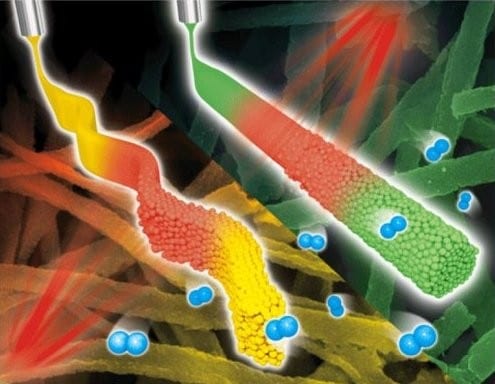Electrospinning has been recognized as one of the most efficient techniques for producing nonwoven fiber webs on the order of several hundreds of nanometers. Various types of materials with high degrees of porosity, large surface areas, superior mechanical properties, and modified surface functionalities, can be electrospun into nanofiber structures.
These materials include polymeric nanofibers as well as metallic and metal-oxide nanofibers, and there are several key parameters, such as electric field strength, solution feeding rate, polymer solubility/viscosity, surface tension, dielectric constant, and the needle diameter – all of which have great influence on the phase, microstructure and morphology of the resulting electrospun fibers.
The simplicity of electrospinning combined with the possibility of largescale production through makes this process very attractive and therefore opens up new commercial markets for diverse applications.
A new special issue of Macromolecular Materials and Engineering, guest-edited by Il-Doo Kim (Korea Advanced Institute of Science and Technology, Daejeon) now highlights a collection of advances focussing on the synthesis, characterization, and utilization of electrospun functional nanofibers.
The three review articles and nine full papers presented here cover very important aspects related to electrospun nanofibers, but other interesting scientific challenges related to functional nanofibers and their practical use in various fields remain to be explored.
As concluded by Prof. Kim, “… (we) hope that this special issue will be beneficial to the readers who are working within or who plan to join the rapidly developing field of electrospinning.”
Read here for free the full introductory Essay by Il-Doo Kim:


















